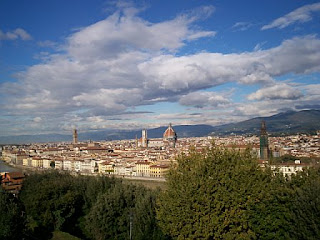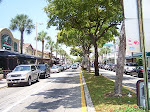
The Renaissance, the Great Awakening. After the fall of the Roman Empire in the late 5th Century, civilization in western Europe fell into the Middle Ages, also referred to as the Dark Ages. During the first few centuries after the sack of Rome, knowledge and society slipped backwards. Under the barbarian's control, Rome fell into ruins, libraries were sacked, and schools ceased to function. Meanwhile the Eastern Empire continues to thrive and advance.
During this period the cities of northern and eastern Europe grew in population. Many of the boundaries in modern Europe were formed in this time period, due to military actions or consolidation of power through marriage. Tales of the riches of the East began to circulate, and attempts to find a quick trade route spurred exploration.
Within Italy, families had once again established fortunes and thirsted for knowledge and art. One famed family was the Medici clan. Thought to be the precursor to modern banks, the Medicis began as money lenders and their wealth grew. Several men were elected Pope, Catherine became Queen of France and is credited with starting French cuisine, but their patronage of the arts is one of the most famous accomplishments.
The wealthy families would support artists to create masterpieces for their homes and estate. Michelangelo, Botticelli, Donatello, da Vinci, Titian. Names that even non art lovers have heard. These works of these early masters are among the most collected and valued today by art connoisseurs.
Along with artwork, churches were built and decorated. Private funds embellished the newly
 built structures. Santa Maria del Fiori, il Duomo, was the largest cathedral in Europe at the time it was built. Its bell tower and soaring dome still monopolize the sky line of the city. The Baptistery in the middle of Cathedral Square featured bronze doors that inspired awe, even in Michelangelo, and are considered the first masterpieces of the Renaissance.
built structures. Santa Maria del Fiori, il Duomo, was the largest cathedral in Europe at the time it was built. Its bell tower and soaring dome still monopolize the sky line of the city. The Baptistery in the middle of Cathedral Square featured bronze doors that inspired awe, even in Michelangelo, and are considered the first masterpieces of the Renaissance.The Medicis and other wealthy families built large houses in
 towns that still survive. Older homes feature a rusticated style that display hand hewn stone blocks. Later structures are clad in finished blocks or marble. In l'Academie, David stands for all to admire. Originally meant to adorn the exterior of a Medici city home, it was moved inside to protect it and a replica was erected on its original site. Many other statures still grace the squares, fair maidens, wild animals and warriors(the best ones) lurk around corners. The sculptors of old appreciated the human form and seem to bring the marble to life with bodies carved to perfection.
towns that still survive. Older homes feature a rusticated style that display hand hewn stone blocks. Later structures are clad in finished blocks or marble. In l'Academie, David stands for all to admire. Originally meant to adorn the exterior of a Medici city home, it was moved inside to protect it and a replica was erected on its original site. Many other statures still grace the squares, fair maidens, wild animals and warriors(the best ones) lurk around corners. The sculptors of old appreciated the human form and seem to bring the marble to life with bodies carved to perfection. Also in the larger square are the houses of the growing middle class and smaller neighborhood churches. These are small than the cathedral but no less impressive in their decoration. At Christmas, these square are filled with stall selling decorations, religious items and food. A great way to experience a cities holiday traditions.
Also in the larger square are the houses of the growing middle class and smaller neighborhood churches. These are small than the cathedral but no less impressive in their decoration. At Christmas, these square are filled with stall selling decorations, religious items and food. A great way to experience a cities holiday traditions.
The River Arno flows through the southern part of the city, crossed by many
 bridges. The Ponte Vecchio is the most well known. It was originally constructed by the Romans, they built half of Europe I think. After it was destroyed in 1333 due to flooding it was reconstructed and lined with shops. Originally food stall and butchers, it now features jewelry, leather and other high end items. There is also a hidden passage way installed by the Medicis so they could cross the river unseen.
bridges. The Ponte Vecchio is the most well known. It was originally constructed by the Romans, they built half of Europe I think. After it was destroyed in 1333 due to flooding it was reconstructed and lined with shops. Originally food stall and butchers, it now features jewelry, leather and other high end items. There is also a hidden passage way installed by the Medicis so they could cross the river unseen.Florence, just a short ride from Rome or Pisa. Too many sites to list all of them, and gateway to Tuscany. Artwork, food and wine, what more could you want in a vacation? Damron Vacations can help make your Under the Tuscan Sun adventure come true. So call today and start practicing your Italian. Ciao bella!!





No comments:
Post a Comment